|
Highlights

Two NOAA-sponsored habitat restoration projects in Louisiana have been approved for $53.5 million in funding in 2022 by the Coastal Wetlands Planning, Protection, and Restoration Act Program. Together, these projects will restore approximately 1,100 acres of wetland habitat, helping to support resilient coastal communities and sustainable fisheries along the Louisiana coast. Contact: Cecelia Linder.
|
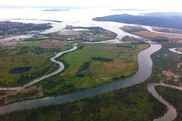
Celebrating #IHeartEstuaries is a popular way to show your love to these bodies of water where rivers meet the sea. Led by Restore America’s Estuaries and the National Estuarine Research Reserve Association, this annual event recognizes the importance and value of estuaries. We have many reasons to appreciate them, let us count the ways. Contact: Alison Hammer.
|
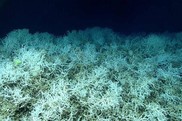
NOAA’s Deep Sea Coral Research and Technology Program has completed its multi-year highly collaborative effort, known as the Southeast Deep Coral Initiative. Extensive collaborators explored and characterized deep-sea coral and sponge ecosystems in the federal waters of the U.S. South Atlantic, Gulf of Mexico, and U.S. Caribbean. Contact: Heather Coleman.
|
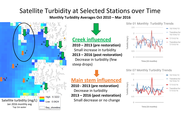
A new NOAA Fisheries Technical Memorandum explores whether satellite imagery can help scientists identify trends in water quality near oyster restoration projects. As it turns out, the data were useful, and the paper’s authors found that mature restored reefs were partially responsible for clearer water. Contact: Jay Lazar.
|
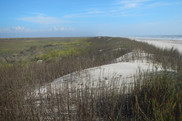
NOAA and Deepwater Horizon restoration partners recently kicked off a project to rebuild 17 miles of eroded shoreline along the southern edge of McFaddin National Wildlife Refuge in Texas. The new beach and dunes will be habitat for birds and other wildlife, while protecting coastal wetlands and the fish and other life that use them. Contact: Jamie Schubert.
|
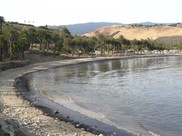
In FY 2021, NOAA’s Damage Assessment, Remediation, and Restoration Program recovered over $130 million to restore 10 polluted waterways in six states. In her recent weekly update, the National Ocean Service’s Assistant Administrator, Nicole LeBoeuf, provided a video update on those accomplishments—including more than $20 million recovered for restoration after the 2015 Refugio oil spill in California, and $25 million recovered for restoration after hazardous waste pollution in Michigan’s Kalamazoo River. Contact: Jeff Smith.
|
|
|
Habitat Across NOAA
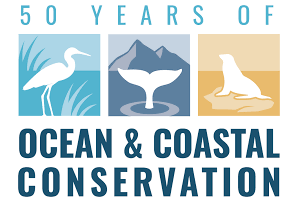
Fifty years ago, Congress took action to protect the nation’s ocean and coasts when it passed a set of powerful laws that help form the foundation for the nation’s coastal and marine stewardship today: the Clean Water Act, Coastal Zone Management Act, Marine Mammal Protection Act, and National Marine Sanctuaries Act. NOAA and our partners recently launched a campaign to celebrate 50 Years of Ocean and Coastal Conservation (#OceanAndCoast50) and share what we’ve accomplished together to protect these special places, habitats, and species.
|
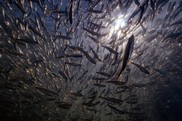
Restoration can help diversify salmon habitat and may stabilize fishing opportunities against climate shocks. NOAA Fisheries’ researchers chronicled the loss of habitat and genetic diversity that once helped salmon withstand a changing climate. They said restoring degraded habitat and access to habitat above dams could help revive that diversity. Restoration of salmon habitat can help reclaim some of the original diversity and resilience of the species while also benefiting people. Natural floodplain habitats that support juvenile salmon can also improve flood protection and provide room for recreation.
|
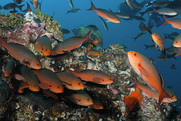
NOAA’s National Centers for Coastal Ocean Science awarded $1.7 million of an anticipated $5.9 million over the next four to five years for three research projects to investigate species’ habitat usage and connectivity in and around national marine sanctuaries in the Florida Keys, Flower Garden Banks (Gulf of Mexico), and Stellwagen Bank (off coast of Massachusetts).
|
|
|
Announcements
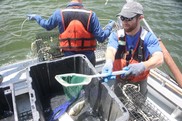
The NOAA Chesapeake Bay Office plans to offer five paid internships during summer 2022. Applications are due February 20 for the opportunities. One intern will focus on each of these areas: environmental literacy, field operations and observations, climate and coastal resilience, data analysis and visualization, and community partnerships.
|
Restore America’s Estuaries (RAE), with support from Coalition to Restore Coastal Louisiana, will be holding the 11th National Coastal & Estuarine Summit to bring together the coastal restoration and management communities to explore issues, solutions, and lessons learned. As climate change, adaption, resilience, and building inclusive coastal communities transcend our collective work, the Summit will address all aspects of coastal and estuarine restoration and management, including the Great Lakes and international locales.
|
|
|
|